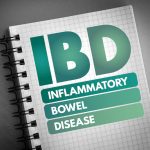Food allergies and Intolerances are a common contributor to several childhood health conditions such as eczema, asthma, hay fever and digestion issues. A focus on environmental inhalants, dust-mites, moulds, pollens is always a big component however the impact of food, preservatives and the gut is often missed.
Food allergies and intolerances are on the rise in Australia, with a staggering 10% of infants under 1 and 4-8% of children under the age of 5 experiencing a food allergy. In fact, Australia has one of the highest rates of food allergy in the world! So, just why are food allergies and intolerances on the rise? This an important question and there aren’t yet clear or definitive answers, but some factors that play a role include:
- Genetics – allergies and intolerances often run in families. A family history of food or other allergies increases a child’s risk of having allergies. This includes families who experience eczema, hay fever, and asthma, too.
- Birth History: allergic type conditions are more prevalent in children who were born via caesarean, not breast fed or who were born prematurely due to the impact this has on important gut bacteria colonisation.
- Early or late food introduction – children who are exposed to solids very early (before 4 months of age) or who aren’t exposed to allergenic foods until late (after 1 year of age) have a higher risk of developing food allergies.
- Gut dysfunction – the gut is important for immune regulation and protecting the body from particles in our food that we might react to. Imbalances in gut bacteria and damage to the intestinal wall can both contribute to food intolerances, by allowing undigested proteins and other immune-reactive food particles to be absorbed into the blood.
- Low stomach acid production – stomach acid is needed for breaking down foods that can cause immune and intolerance reactions. Low stomach acid production can sometimes occur due to altered gut microbes.
- Low levels of vitamin D – an important nutrient for regulating the immune system and one which many Australians are deficient in.
- Gut microbiome – Altered gut microbiome thanks to diet and extent of antibiotic use.
- Medication use – including antacids, which affect the breakdown and absorption of nutrients.
- Stress – stress suppresses our immune function and can cause negative changes to gut bacteria, too.
- Limited or restricted diet – consuming the same foods repeatedly, without sufficient variation in the diet, can increase the risk of food intolerances.
Navigating food allergies and intolerances can be complex and overwhelming, but with education and planning, it can be very manageable. In fact, many children are able to improve their health and increase their tolerance to many foods that they previously were unable to eat, simply by modifying their diet in the short term and looking after their overall health in the long term. This blog provides you with the information and tools you need to help your child manage their food allergies and intolerances and regain control of their health.
What is the difference between allergy and intolerance?
Sometimes, the terms “allergy” and “intolerance” are used interchangeably, but there are important differences between the two.
Allergies
A true food allergy is an immunological response. The immune system mistakenly recognises a protein or other component within a certain food as being harmful and initiates a cellular (immune) response to the food when exposed to it. This response typically involves the release of IgE antibodies, which triggers the release of large amounts of histamine – the chemical responsible for symptoms such as itchy, watery eyes, nasal congestion, and hives. Allergic reactions to foods can occur when exposed to even the tiniest amount of the food. If your child has a severe food allergy, even breathing in particles from someone else’s meal may be enough to trigger an immune response. Allergies tend to have more sudden, severe symptoms, including anaphylaxis (the type of allergy that requires an EpiPen). However, not everyone with a food allergy experiences anaphylactic responses. They may instead experience less severe allergic-type symptoms, such as allergic asthma or hay fever, or even skin rashes.
Symptoms of a food allergy may include:
- Anaphylactic response – sudden and severe swelling of the throat, eyes, lips, with swelling causing difficulty breathing – a medical emergency that requires rapid care.
- Respiratory symptoms – sneezing, red itchy nose, sinus pain.
- Gastrointestinal symptoms – bloating, flatulence, abdominal cramps, tingling or itching sensation in the mouth, swelling of the mouth, tongue and throat, difficulty swallowing.
- Skin symptoms – hives, red and itchy rashes, swelling of the face.
- Other – feeling dizzy or light-headed.

Food allergy symptoms are typically very quick to develop after exposure to the allergen, often within a matter of minutes after exposure. Symptoms also tend to get worse with each subsequent exposure. This is why exposure is a serious issue with those with allergies.
Intolerances
A food intolerance is a chemical reaction to a food which results in symptoms. Food intolerances typically cause less severe symptoms than allergic reactions, but they can still be significant. Food intolerance reactions may occur due to a person lacking an enzyme required to properly digest a food or may occur in response to chemicals or additives found in foods. Symptoms of food intolerance can range from mild to severe. They tend to be more chronic and have less obvious symptoms compared to a food allergy. Food intolerance reactions can be much slower to develop compared to allergic responses, with a lag of several hours (and up to several days) after each exposure. This lag in symptom development is why it can be much more difficult to identify trigger foods for intolerance symptoms.
Symptoms of food intolerances in children may include:
- Gastrointestinal symptoms: abdominal pain, bloating, flatulence, diarrhoea, constipation, or erratic bowel movements, heartburn.
- Respiratory symptoms – sinus congestion, asthma, chronic cough, wheezing.
- Skin symptoms – rashes, hives, itchy skin, eczema.
- Neurological symptoms – headaches or migraines, fatigue, low energy, “brain fog”, poor concentration, mood changes, restlessness.
Common Food Allergens
A food allergy can involve any food, but just eight different food-types make up 90% of cases of food allergy. The most common food allergens are:
- Dairy
- Wheat and gluten
- Soy
- Eggs
- Fish
- Shellfish
- Peanuts
- Tree nuts
Some less common food allergies include:
- Tomatoes
- Pineapple
- Corn
- Meat (sometimes occurs due to complications following tick bites)
- Sesame, sunflower, and poppy seeds
- Celery
- Carrot
- Avocado
- Potato
- Pumpkin
- Note: Allergic reactions to fresh fruits and vegetables is sometimes referred to as oral allergy syndrome.
Common Food Intolerances
The range of foods that can cause intolerance reactions is much larger and more varied. Here we have categorised them according to food intolerance type – histamine intolerance, salicylate sensitivity, FODMAPs, food additives and preservatives, nightshades, and other types of intolerance reactions. Your child may experience intolerance reactions to a number of different foods or may only react to one.
Histamine
Histamine is a chemical that causes allergic-type symptoms in the body. We all have a limit to how much histamine in food we can tolerate, but for some, this tolerance level is significantly reduced, leading to symptoms occurring from eating foods that others do not react to. Foods that are high in histamine include:
- Highly processed or smoked meats such as salami, bacon, hot dogs, pepperoni
- Fermented foods, such as kombucha, kefir, kimchi, sauerkraut, vinegar
- Fermented and/or aged dairy products, such as yoghurt, cheddar, parmesan, and Swiss cheese
- Dried fruits
- Processed and pre-packaged foods, including condiments like tomato sauce
- Leftovers, particularly once 24 hours+ old
- Coffee
- Fish and seafood
- Beef
- Strawberries, pineapple, citrus fruits
- Avocado, spinach, eggplant
Foods that trigger histamine release in the body:
While these foods themselves do not contain high amounts of histamine, they ca trigger the release of histamine in the body when we eat them, so are best avoided if histamine is causing health issues.
- Bananas, papaya, citrus fruits
- Tomatoes, beans
- Wheat germ
- Chocolate
- Walnuts
- Cashews, peanuts
Salicylates
Salicylates are a type of phenol that are found in many different plant foods. A salicylate sensitivity in children can present with behavioural and mood changes, including anxiety and depression, and even difficulty sleeping. Foods that are high in salicylates include:
- Vegetables: alfalfa, artichoke, broad beans, broccoli, capsicum, chilli, corn, chicory, cucumber, eggplant, endive, fava beans, gherkin, okra, canned mushrooms, spinach, squash, zucchini, olives, sweet potato, canned tomato, radishes, water cress
- Fruits: Apple (granny smith), avocado, cherries, dried figs, grapes, grapefruit, mandarin, oranges, loganberries, guava, dates, mulberry, peach, tangelo, prunes, raisins, pineapple, canned plums, raspberry, redcurrants, strawberries, sultanas, youngberry, cranberry, rockmelon, boysenberry, apricot, blackberries, blueberries
- Nuts, seeds and grains: pine nuts, macadamias, pistachios, almonds, peanuts, flavoured chips and crackers
- Herbs, spices, seasonings and condiments: all spice, anise seed, cayenne, celery, cinnamon, cumin, curry powder, dill, fenugreek, five spice, garam masala, ginger, honey, jam, vegemite, vinegar, mace, mint, mixed herbs, mustard, oregano, paprika, pepper, rosemary, sage, tarragon, turmeric, thyme, Worcestershire sauce
- Sweets and sugars: liquorice, mints and peppermints, chewing gum, fruit flavourings
- Beverages: tea, peppermint tea, fruit juices, cordials
- Non-food products: mint-flavour toothpaste, sunscreens, after sun lotion, certain soaps and cleansers, shampoo and conditioners
FODMAPs
FODMAPs (AKA fermentable oligo-, di-, monosaccharaides, and polyols) are specific types of sugars that are found in many types of food. These sugars are often associated with bloating, abdominal pain, and flatulence in conditions like IBS, but can also cause intolerance reactions. Examples of FODMAPs include:
- Oligosaccharides (such as fructan, inulin, and GOS): nectarines, watermelon, artichokes, garlic, onions, chickpeas, kidney beans, lentils, pistachios, cashews, wheat, barley, rye
- Disaccharides (such as lactose): dairy products – milk, ice cream, yoghurt, ricotta, cottage cheese, other soft cheeses
- Monosaccharides (such as fructose): honey, apples, boysenberries, figs, mangoes, pears, watermelon, asparagus, artichokes, dried fruits
- Polyols (such as xylitol, sorbitol, mannitol): apples, apricots, blackberries, plums, cauliflower, mushrooms, snow peas, artificial sweeteners and “low sugar” food products
Food Additives and Preservatives
Both artificial and natural food additives and preservatives can cause intolerance reactions and symptoms in children. If intolerance or sensitivity to food additives and preservatives is suspected, it is crucial to always read food labels – it can be surprising which foods contain these chemicals. The following are common intolerance reaction-causing chemicals:
- Glutamates: MSG, flavour enhancers (620-627) – found in many different foods, such as soy and yeast extracts, soy sauce and other condiments, processed meats, chips and other snack foods, fast food, frozen meals, and commercial seasoning blends
- Colours: coal tar/ petroleum food dyes, (102, 104, 110, 122, 123, 124, 127, 129, 132, 133, 142, 143, 151, 155) – these are commonly found in foods such as soft drinks, lollies, syrups, frozen treats, packet-mix gravy, and cereals
- Preservatives: sorbates (200- 203), benzoates (210-213), parabens (216, 218), sulphites (220-228), nitrates (249-252) – found in many commercially prepared, pre-packaged foods
- Preservatives: propionates (280-283), gallates (310-312), BHA (320), BHT (321) – found in many commercially prepared, pre-packaged foods
Nightshades
Nightshades are a family of plants, which contains a number of commonly eaten fruits and vegetables. A nightshades intolerance can lead to symptoms such as bloating and abdominal pain, or even fatigue and joint pain. Nightshades foods include:
- Potato
- Tomato
- Eggplant
- Capsicum
- Chilli
- Goji berries
Other
Other common foods that trigger food intolerance reactions include:
- Wheat and gluten (e.g., non-Coeliac gluten sensitivity, or NCGS)
- Eggs, especially egg whites
- Casein, the protein found in milk, which can also cause allergy
Health Consequences of Food Allergies and Intolerances
Gastrointestinal System and Microbiome Changes
Exposure to foods that cause an immune reaction over time leads to damage to the intestinal walls, as chronic inflammation damages cells and the gut barrier. This chronic inflammation can also cause negative changes to the gut microbiome. These changes not only lead to poor health overall but can even lead to an increased likelihood of reacting to even more types of foods, as the defence barriers in the gut are no longer working.
Immune System
Over time, the immune system becomes overloaded and overburdened. This can lead to poorer defences against other infections and an increased risk of illness.
Neurocognitive Changes and Mental Health
Chronic inflammation, altered microbiome, and ongoing immune reactivity can all wreak havoc on mental health. Depression, anxiety, insomnia, and behaviour issues can all result.
Health Conditions Associated with Food Allergies and Intolerances
Certain health conditions are associated with food allergies and intolerances and will often go hand-in-hand with an underlying, undiagnosed food intolerance or allergy.
Eczema
Eczema is a chronic skin condition that is due to an allergic-type immune reaction in the skin. It is often first diagnosed in childhood but can also develop for the first time in adulthood. For many (but not all) people, eczema occurs alongside other allergic-type conditions, such as asthma and hay fever, but the triggers for each may vary. Food is a common trigger for eczema flares. Common trigger foods include wheat, cow’s milk, soy, eggs, shellfish, nuts, and peanuts. Food additives, amines, and salicylates can also trigger eczema symptoms.

Asthma
Asthma is a chronic respiratory condition that often first develops in childhood. While many children will outgrow asthma, for others it is a lifelong issue. Like eczema, asthma is part of the group of common atopic (allergic) conditions that can affect children, along with hay fever and sinusitis. Asthma in children is very common, particularly in Australia, and can be due to underlying food intolerances or allergies.
Hay fever and Sinusitis
More allergic-type health conditions that can be associated with food allergy or intolerance. Hay fever is an allergic, immune response to specific irritants. Food allergies or intolerances can trigger or worsen hay fever symptoms. Sinusitis, which is due to an infection, can be a consequence of chronic hay fever and can make the condition worse. Hay fever and sinusitis may be misdiagnosed in children with an undiagnosed food allergy or intolerance, as they can present very similarly, with itchy, watery eyes, runny nose, cough, and fatigue.
Chronic Fatigue
Chronic and prolonged exposure to food intolerances or allergies can deplete vitality, leading to chronic fatigue. There may also be underlying gastrointestinal, immunological, and neurological inflammation that is contributing to the fatigue, as a result of the intolerance/ allergy.
Irritable Bowel Syndrome
IBS is becoming more commonly understood as often being associated with food intolerance, particularly an intolerance to FODMAPs.
Coeliac Disease
Whilst not technically a food intolerance or allergy, it’s worthwhile touching on Coeliac disease. Coeliac disease is an autoimmune response to gluten, found in wheat and other grain products. Although not an allergy, a diagnosis of coeliac disease requires life-long strict avoidance of gluten, similarly to food allergies.
Naturopathic Testing for Allergies and Intolerances
In young children, blood testing may not be the ideal approach initially. In older children, it is something commonly recommended and I often test for allergies, food intolerances and look at blood tests to identify nutrient deficiencies and allergic responses. Assessing for food allergies and intolerances requires a two-pronged approach – testing, followed by dietary assessment and intervention.
In addition to these, it may be necessary to assess your child’s level of certain important nutrients, such as vitamin D. Whilst allergies are more easily identified through blood tests, it is much more difficult to accurately identify food intolerances which is why the following is commonly used:
- Food & Symptom diary
- Elimination Diet
- Reintroduction/Challenge Diet
- Rotation Diet
A food and symptom diary is important so that as a naturopath I can review what your child is eating and how it coincides with symptoms. There are common reactive foods that can be quickly identified.
The goal of an Elimination Diet and gradual reintroduction food challenge is the strategic identification of trigger foods and symptom relief whilst we focus on correcting a number of underlying processes that trigger an immune response including:
- Restoring healthy gut bacteria and digestion. Repairing the gastrointestinal barrier.
- Supporting normal immune system function
- Symptom relief
Any known allergies from serious food reactions or IgE testing are simply excluded.
Developing a 4-Day rotation diet for children following the investigative process above means that symptoms of allergies, eczema and more are reduced. As food reactions commonly occur within 3 days of exposure to the food, this gives your child’s body ample time for inflammation and immune response to die down again before the food is introduced again. If a reaction does occur, there is not the added pressure on the immune system of having this food again the next day and the body is not exposed over and over, causing histamine related symptoms. It is also much easier to identify any new culprit foods.
There is nothing more frustrating for parents than supporting their child with allergic type conditions. Watching your child succumb to constant infections, itching with eczema or hay fever or trying to manage troublesome digestive issues can be traumatic for parents and their children.
Food allergies and intolerances are often the forgotten piece when supporting a child with the conditions mentioned in this blog. As you will sense from reading this education piece, identifying culprit foods so that they may be included in your child’s rotation diet is no simple task.
If you require support in this process so that you have more unique information as to what your child may be reacting to, please reach out for an initial naturopathic consultation or email me on tanya@performanceinhealth.com.au










